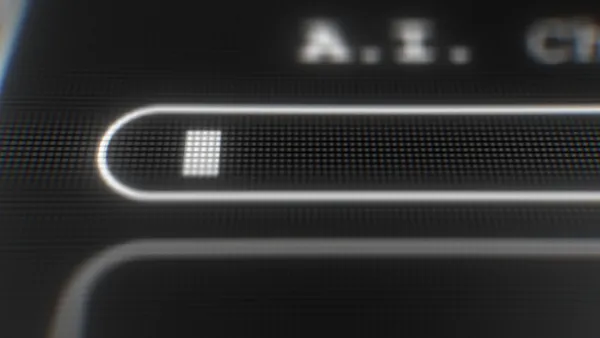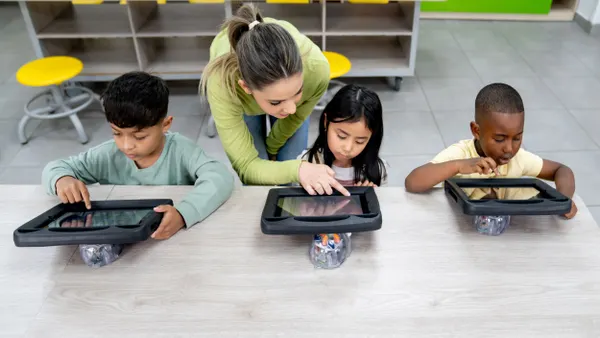Charlie Reisinger is director of technology for Penn Manor School District in Lancaster County, Pennsylvania.
Six years ago, my school district faced a problem common to all public school leaders: not enough money to bring powerful learning technology to students.
So we chose a different way — the open source way — and as a result, we've saved our technology budget more than $1 million.
But the cost savings are just the beginning. More importantly, our decision to adopt 4,000 Linux-powered laptops empowered our students in remarkable ways.
Here at Penn Manor School District, we've gained much more by using Linux and other open source software. And by infusing open principles and practices into our learning environment alongside open technologies, we've cultivated a vibrant and inclusive learning community for all students.
What started with a few elementary school laptop carts running the Linux operating system and open source applications has grown into an award-winning, districtwide, 1:1 laptop learning program and student technology help desk — all built with open source principles and software at the forefront.
Not your typical classroom
Over the past six years, more than 50 high school students have worked side by side with district technology experts to troubleshoot software and hardware issues related to the laptop program. The help desk students — apprentices who receive honors-level, independent study credits for their work — don't have textbooks, tests or a standards-aligned curriculum.
Instead, they come to "class" each day and face unexpected problems for which they must find solutions by connecting with peers, open source communities and internet resources. They help fellow students (and sometimes teachers) tackle authentic technological challenges, and they build confidence and work experience along the way. Three of the students now work full- or part-time on the district's technology staff.
Other educators often ask me how our program and the principles of open source software development mirror each other. I've identified three key similarities:
-
Trust. Trust is a crucial tenet of the open source ethos since anyone can suggest changes to the code and use the code as they see fit. Trust is also a critical component of the Penn Manor program. Rather than lock down laptops as many schools do, limiting what students can do with technology, Penn Manor High School students have "root" access to their school-issued laptops. We encourage them to tinker, experiment, create, explore and learn. Of course, the district maintains a CIPA compliant network to ensure inappropriate content is blocked. However, no significant discipline issues have resulted from giving students elevated access privileges to their school computers. Letting go of control to trust students is a daunting prospect for educators and parents alike. But we've discovered that increased trust in students leads to increased student creativity, curiosity and learning.
-
Active Participation. The Penn Manor Help Desk model honors learning by doing and strives to make students active participants in their education. Rather than sit in classrooms and consume knowledge from teachers, the students contribute their time, talent and work to a meaningful program that directly benefits their peers every single day. In this way, they become "makers," not just "takers." Participation is likewise critical in the open source software world. Programmers give back to the greater community by sharing their time, work, and knowledge through continual code development, not just by using the software.
-
Flattened Hierarchy. One of our goals is to help students discover that they can build and command technology — not simply be content with someone else's technical or marketing decisions. The result is a crumbling of the traditional technology power structure. Our help desk students experience a dismantling of the conventional top-down relationships and barriers between students and teachers. That's because, on the help desk, students work with IT staff and even teachers on authentic problems. Student input and voice is elevated, and the best ideas always win — no matter if they were from a student, teacher or staff member. And when the best ideas win, more student voices are encouraged to come forward and build an amazing community of practice.
Open ways spread
Because the program has been so successful, Penn Manor High School is designing two new computer science courses with open principles in mind. Neither course will concentrate solely on coding, as do many computer science classes, but instead will be organized around communicating, connecting and building. We believe these are the skillsets and mindsets students need to meet the job demands of tomorrow.
Educators and education leaders also need such mindsets to carry out open source principles in classrooms. In open schools, simply lecturing and testing won't cut it. Instead, our role as leaders is to clear obstacles, provide prompts, and create a culture where trial and risk receive encouragement and praise.
Honoring students
I've written more about the experience at Penn Manor in a book soon to launch, "The Open Organization Guide for Educators." The book highlights ways educators all over the world are likewise embedding open principles in their organizations to realize extraordinary benefits for students.
And it was written the open source way: More than 20 educators — including one of my help desk students at Penn Manor — collaborated to create an openly licensed guide that may be shared, remixed and revised by learners of all ages.
At Penn Manor, we've found that by honoring learning by doing, students become active agents in their educations and contribute to the school community in innovative new ways. I hope our experience provides ideas and inspiration to other school districts, educators and leaders on how to deploy open principles in ways big and small.











